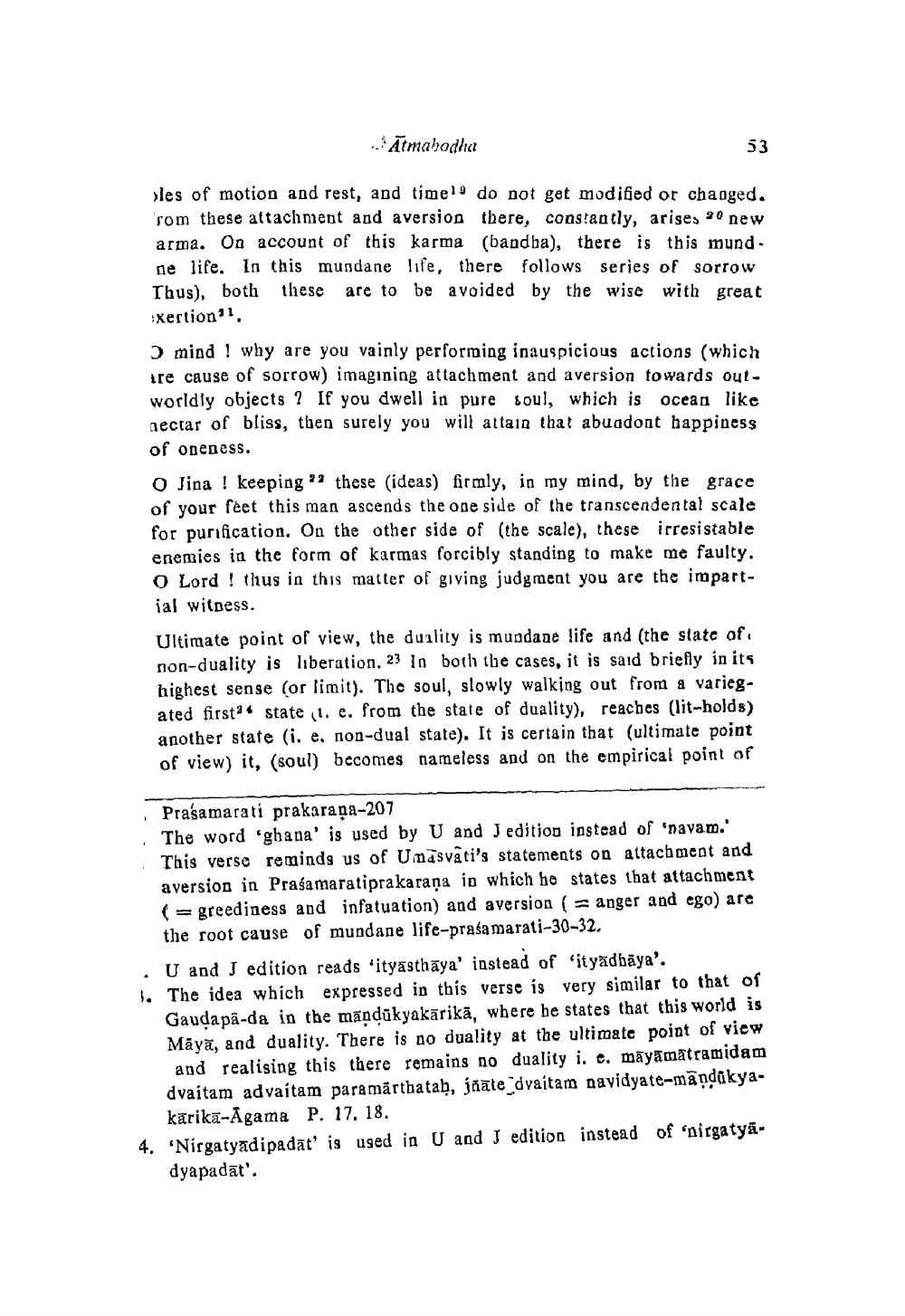________________
Ātmahodha
les of motion and rest, and timele do not get modified or chaoged. rom these attachment and a version there, constantly, arise, 30 new arma. On account of this karma (bandba), there is this mundne life. In this mundane life, there follows series of sorrow Thus), both these are to be avoided by the wise with great xertional,
mind ! why are you vainly performing inauspicious actions (which ire cause of sorrow) imagining attachment and aversion towards outworldly objects ? If you dwell in pure soul, which is ocean like aectar of bliss, then surely you will attain that abuadont happiness of oneness. O Jina ! keeping " these (ideas) firmly, in my mind, by the grace of your feet this man ascends the one side of the transcendental scale for purification. On the other side of the scale), these irresistable enemies in the form of karmas forcibly standing to make me faulty. O Lord ! thus in this matter of giving judgment you are the impartial witness. Ultimate point of view, the duality is muodane life and the state of non-duality is liberation. 23 In both the cases, it is said briefly in its highest sense (or limit). The soul, slowly walking out from a variegated first state (1. e. from the state of duality), reaches (lit-holds) another state (i, e, non-dual state). It is certain that (ultimate point of view) it, (soul) becomes nameless and on the empirical point of
· Prasamarati prakaraṇa-207
The word 'ghana' is used by U and J edition instead of 'navam.' This verse reninds us of Umasvati's statements on attachment and aversion in Praśamaratiprakaraṇa in which he states that attachment (=greediness and infatuation) and aversion ( = anger and ego) are
the root cause of mundane life-prasamarati-30-32. . U and J edition reads "ityasthaya' instead of 'ityadbāya'. 1. The idea which expressed in this verse is very similar to that of
Gaudapã-da in the mandūkyakārikā, where he states that this world is Māyā, and duality. There is no duality at the ultimate point of view
and realising this there remains no duality i. e. māyāmatramidam dvaitam advaitam paramārthatah, jñāte "dvaitam pavidyate-mandakya
kārika-Agama P. 17. 18. 4. 'Nirgatyadipadāt' is used in U and I edition instead of nirgatya
dyapadat'.




